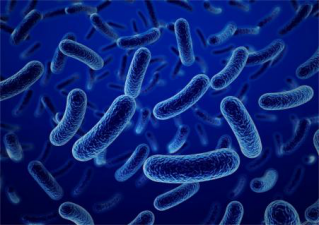How to improve facilities apricot fruit setting rate
Through the four-year experiment, we have summarized the management measures to avoid a large amount of apricot trees and a low fruit setting rate. The technical points are as follows: First, choose the good variety to choose full flower rate, self-batch, strong frost resistance, late flowering, early fruit and high yield Kate, Golden Sun apricot, new century, Hongfeng and other varieties as the main varieties. Second, a reasonable pruning of young trees during the thinning of dense branches and leggy branches, and more reserved branchlets, auxiliary branches, in order to speed up the formation and promote early fruit high yield. The fruit period increases with the age of the trees, and the results gradually increase. It is advisable to thinly cut fine and dense fruit-like fruit branches, and to rationally thin the fruit and fruit, so as to reduce the degradation of the flower due to the weakening of the result. The pruning is resumed after the fruit period to restore and maintain the tree vigor. Pruning before the membrane is mainly sparse. Remove squid, weak branches, dense branches, and erect leggy branches to concentrate nutrients. Pruning after harvesting is mainly based on retraction. At the same time, summer shearing is performed to improve the lighting condition in the crown and to regulate the contradiction between nutrition and reproductive growth, so that the natural light transmittance of the canopy is more than 50%. Third, the circumcision of young arranging apricot trees, can effectively increase the amount of flower and fruit set rate in the following year. The width of the trunk ring was 1/30 to 1/25 of the dry thickness, and the wound was sterilized with 20% carbendazim 100 times and then wrapped with a plastic film. One week after stripping, 0.3% urea solution was sprayed twice, once a week, and then 0.3% potassium dihydrogen phosphate solution was sprayed twice, one time per spraying interval. 4. Fertilization Watering Increasing tree nutrient accumulation and improving flower bud quality are effective measures to increase the fruit setting rate of apricot trees and increase the amount of results. The base fertilizer is applied in the fall from late September to early October. Basal fertilizer is manure, compost, and human waste. The amount of fertilizer depends on the age of the tree, the vigor of the tree, the amount of the result, and the type of fertilizer. In general, 5000 kg of organic manure per acre, 50 kg of diammonium phosphate, and potassium sulfate compound fertilizer are used. 50 kilograms. From the shed to the hard core, no fertilization can be applied before, and urea must be avoided in particular to prevent the leaves from being long and consume too much nutrients, which is not conducive to fruit set. After the harvest, the fertilizer was applied in a timely manner. 25 kg of potassium sulfate compound fertilizer and 50 kg of urea were applied per acre to restore the tree vigor and guarantee high yield and stable production in the following year. Avoid flooding and reduce the humidity by ventilation and covering the film. Watering as little as possible during flowering, when it is very dry, watering a small amount, with drip irrigation as well. Water is controlled after the fruit is colored to promote coloration and maturation. Fifth, chemical regulation Spraying 1.5% pp333200 ~ 400 times in mid-July to prevent tuberculosis, promote flower bud differentiation, such as tree vigor, can be sprayed 2 to 3 times. Six, outside the top dressing for the timely addition of the tree's nutrient consumption, need to top dressing outside the apricot tree. 1 Sprinkle dry shoots with 0.5% urea solution before flowering. 2 Spray 0.3% borax +0.3% urea during full bloom to increase fruit setting rate. 3 After spraying, spray 0.3% urea + 0.3% potassium dihydrogen phosphate solution. 4 Spray 0.3% potassium dihydrogen phosphate in the first half of fruit ripening to promote fruit coloring. VII. After controlling the temperature and humidity of the buckle film, before germination, the daytime temperature should be 12 to 15°C, and the nighttime should be no less than 3°C, and the relative humidity should be controlled below 80%. Flowering temperature, during the day with 15 ~ 20 °C is appropriate, at night not less than 5 °C, relative humidity to maintain about 50%. Eight, flower and fruit management in the conditions of protection of air humidity, lack of pollinators, is not conducive to pollination and fertilization, so the use of flowering bees, artificial pollination and other methods to improve the fruit setting rate. As the saying goes: “Look at the tree to set production, branch burden, even fruit,†only scientifically and reasonably thinning fruit and fruit, in order to reduce nutrient consumption, improve the fruit setting rate and the quality of apricot trees, the best sparse flower buds, sparse Go to weak flowering and stunted late flowering buds. The fruit thinning should be based on the principle of “reserving good and badâ€, and removing the deformed fruit, small fruit, and pests and diseases. 9. Increase the height of the apricot tree in the southern part of the lighting control booth to avoid shading. Use drop-free film and spray with water drops before use. In the winter and spring seasons, the light in the greenhouse should be increased as much as possible. If the temperature permits, the grass should be released early and the sky should be covered with scattered light. And promptly clean or wash the film. X. Prevention and control of pests and diseases Sticking to prevention, no or less use of pesticides, combined with the application of biological control and other comprehensive technical measures. Specific prevention and control methods: Spray the whole plant 1 to 2 times with 5 Baume degrees of lime sulfur after the shed, spraying 80% of Dasheng M-45 or 70% of thiotoxin 600~ every 10 to 15 days after flowering. 800 times liquid, even spray 3 to 5 times. When locusts and ticks occur, 10% imidacloprid 1500-2000 dilutions can be used, and 15% Daltons 1500-fold spray control.
All water based products have plenty of nutrients and water to support microbe growth under favorable conditions. Microbes invade water based products from multi-point sources, such as contaminated raw materials, poor plant hygiene, untreated water, and not properly preserved recycling materials. While adding in-can preservatives into the products should not excuse a factory from Good Manufacturing Hygiene Practices (GMHP), proper use of in-can preservatives coupled with GMHP can dramatically minimize the chance of microbial tolerance development, and assure unspoiled products to customers.
Sunshine Biotech supplies to all industrial biocides formulators with high quality BIT technical ingredients. Besides of BIT, we also provide its derivative, like BBIT, MBIT etc.
Biocide Technical Ingredients Biocide Technical Ingredients,Biocide Formula,Biocide Ingredients,Biocide Liquid Nanjing Sunshine Biotech Co., Ltd , http://www.sunshine-bio.com

